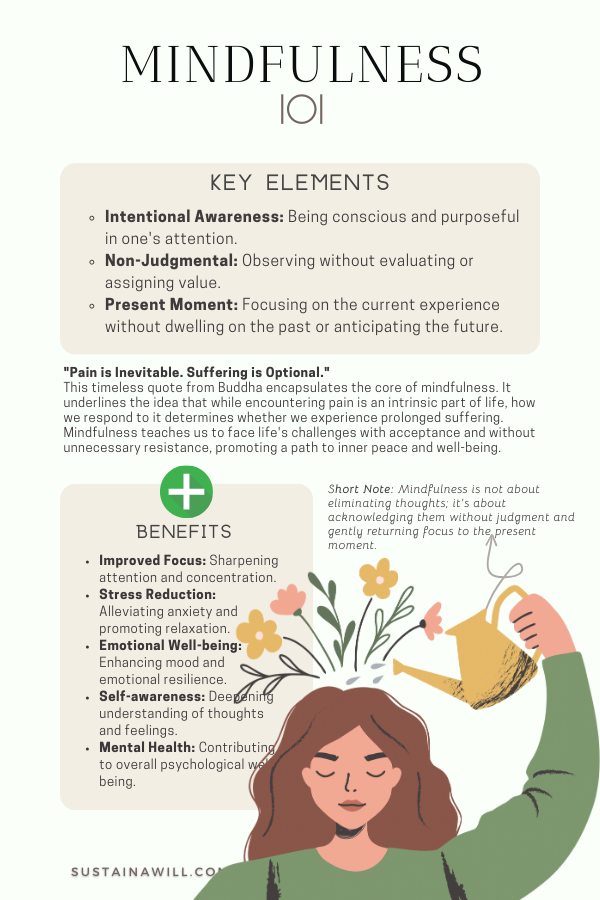In today’s fast-paced world, finding moments of peace and calm can feel like a luxury. However, incorporating mindfulness into your everyday life can have immense benefits for your overall well-being. Mindfulness is the practice of maintaining a moment-by-moment awareness of our thoughts, feelings, bodily sensations, and the surrounding environment, without judgment. By cultivating mindfulness, you can create a sense of tranquility and clarity, even in the midst of a hectic schedule.
Mindful Morning Routine
Starting your day with intention can set the tone for a more mindful and peaceful day ahead. Begin by taking a few moments to focus on your breath, bringing your attention to each inhale and exhale. This simple act of mindful breathing can help to center and ground you. Next, engage in gentle movement, such as yoga or stretching exercises, to awaken your body and connect with each sensation. As you prepare for the day, take a moment to express gratitude for the opportunities that lie ahead.
Mindful Eating Habits
Many of us tend to rush through our meals, barely noticing the taste, texture, or aroma of the food we consume. By practicing mindful eating, we can fully savor each bite and foster a healthier relationship with food. Take the time to slow down while eating, paying attention to the flavors and textures, and chewing each mouthful thoroughly. Engage all of your senses by appreciating the colors, smells, and sounds of your meal. Lastly, be mindful of your portion sizes and choose foods that nourish and energize you.
Mindfulness at Work or School
Our professional or academic lives can often be fast-paced and demanding. However, incorporating mindfulness into these environments can help reduce stress and improve focus. Take short mindfulness breaks throughout the day, where you pause to check in with yourself, slow down your breathing, and bring your attention to the present moment. When transitioning between tasks, take a moment to practice mindful awareness, fully completing one task before moving on to the next. During meetings or classes, practice active listening, fully engaging with the speaker and being present without distractions. Lastly, equip yourself with mindful stress management techniques, such as deep breathing exercises or mindful journaling.

Image courtesy of sustainawill.com via Google Images
Mindful Technology Use
Technology is undoubtedly ingrained in our lives, but it can also contribute to feelings of overwhelm and distraction. To cultivate mindfulness in the digital age, establish boundaries for technology use. Set aside designated times to check your phone or engage in social media, limiting overall screen time. Be mindful of your social media consumption, consciously choosing accounts that inspire and uplift you. Consider incorporating mindful digital detox breaks, where you completely unplug from technology for a set period of time. Utilize mindfulness apps or meditation timers to help you stay focused and present during your digital interactions.
Mindful Evening Routine
Just as a mindful morning routine sets the tone for the day, a mindful evening routine can help you wind down and prepare for a restful sleep. Start by unplugging from screens at least an hour before bed, allowing your mind to relax and unwind. Engage in relaxation techniques, such as meditation or deep breathing exercises, to signal to your body that it’s time to rest. Before sleep, express gratitude for the day’s experiences and find comfort in the present moment. Create a calming sleep environment, free from distractions and clutter, to promote a peaceful night’s rest.
Image courtesy of www.linkedin.com via Google Images
Mindfulness in Daily Chores and Activities
Mundane tasks and chores often feel like distractions from our busy lives. However, by incorporating mindfulness into these activities, we can find moments of peace and contentment. Approach each task with intention and attention, fully immersing yourself in the present moment. Notice the sensations of your body as you wash dishes or fold laundry, paying attention to the warmth of the water, the texture of the fabric, or the rhythm of your movements. Engage all of your senses and allow yourself to be fully present in these everyday moments.
Mindfulness in Relationships
Mindfulness can greatly enhance our relationships, allowing for deeper connections and compassionate interactions. Practice active presence in conversations by giving your full attention, listening attentively, and remaining non-judgmental. Cultivate empathy and compassion towards others, recognizing and acknowledging their emotions and experiences. Utilize mindful communication techniques, such as speaking with intention and clarity, and being mindful of your tone and body language. Lastly, express gratitude for your loved ones and the relationships you cherish, nurturing a sense of appreciation and interconnectedness.

Image courtesy of readingraphics.com via Google Images
Mindfulness in Nature
Spending time in nature is an excellent opportunity to cultivate mindfulness. Take mindful walks in natural surroundings, appreciating the beauty and tranquility of your environment. Engage all of your senses by noticing the colors, fragrances, and sounds around you. Whether it’s hiking, gardening, or simply sitting beneath a tree, allow yourself to fully immerse in the present moment, connecting with the natural elements and finding solace in the great outdoors.
Winding Down
Incorporating mindfulness into your daily life is a powerful way to bring peace and clarity into even the most hectic of days. By engaging in mindful practices throughout your day, from morning routines to evening rituals, you can cultivate a sense of tranquility and presence. Remember, mindfulness is a lifelong journey, and small, consistent steps can make a significant impact on your overall well-being. So, start incorporating mindfulness into your everyday life and revel in the moments of peace and calm that arise amidst the hustle and bustle of your hectic life.




